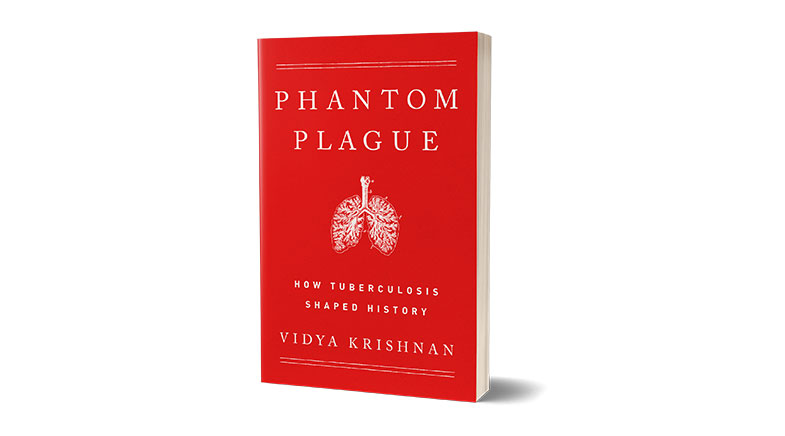Death in the air
-
- from Shaastra :: vol 01 issue 03 :: May - Jun 2022

A humanistic perspective of the challenges posed by TB, a global killer that is more lethal than COVID-19.
The COVID-19 pandemic has highlighted that with some infections, especially those spreading by air, no one is safe until everyone is safe. Tuberculosis (TB), one of the captains of death that has accompanied mankind for all its recorded history, is one such disease. It has been and will continue to be a global public health threat that exceeds COVID-19 by most measures. To understand why, Phantom Plague: How Tuberculosis Shaped History, by health journalist Vidya Krishnan, is a good place to start.
The book is unlike other highly acclaimed books telling the story of tuberculosis from a scientific perspective (for example, Frank Ryan's Tuberculosis: The Greatest Story Never Told), typically authored by biomedical professionals. Unlike these and despite the title, the focus of Phantom Plague is not on the science or the history of scientific discovery in tuberculosis, or about famous historical figures who became its victim.Instead, it provides a humanistic perspective of the challenges posed by TB, discussing what is often left undiscussed. Rather than quoting official statistics, it settles for simply indicating that all estimates are underestimates and the missing millions make this a phantom plague of real consequence.
The initial sections of the book illustrate early thinking about infectious disease in general and tuberculosis in specific, ranging from miasmatic theories to Bram Stoker 's picturisation of vampires. It moves on to a brief scientific account of the establishment of germ theory, entwined with personal accounts of key historical figures. The vivid imagery of this section is notable for literary scholarship but may be distracting to more technical readers, who may find the connections tenuous and somewhat forced. However, the same style makes subsequent sections about public health efforts to limit the spread of tuberculosis germs more engrossing. Descriptions of male resistance to campaigns against public spitting, leading to the shortening of women 's skirts, are memorable, as are anecdotes connecting tuberculosis research to Sherlock Holmes.
PAST ISSUES - Free to Read


Have a
story idea?
Tell us.
Do you have a recent research paper or an idea for a science/technology-themed article that you'd like to tell us about?
GET IN TOUCH














